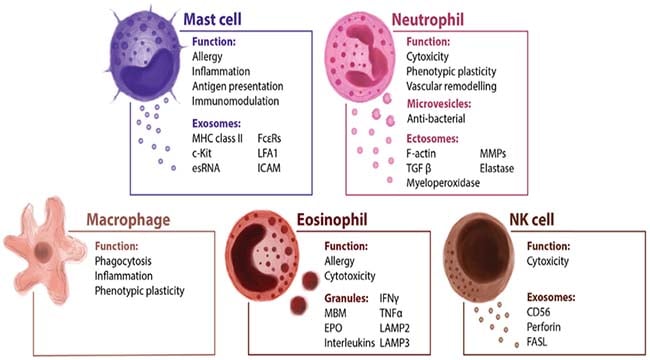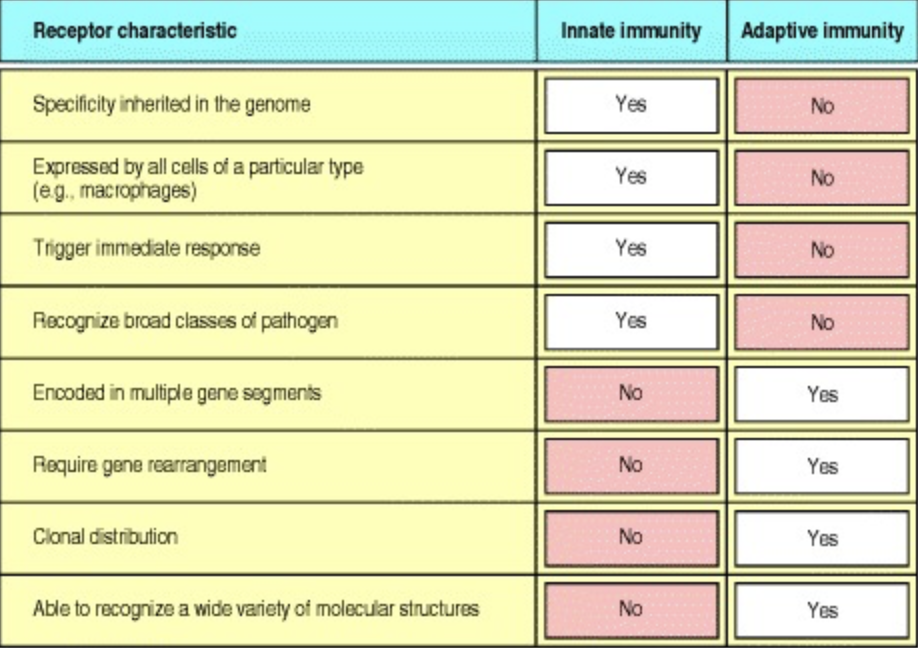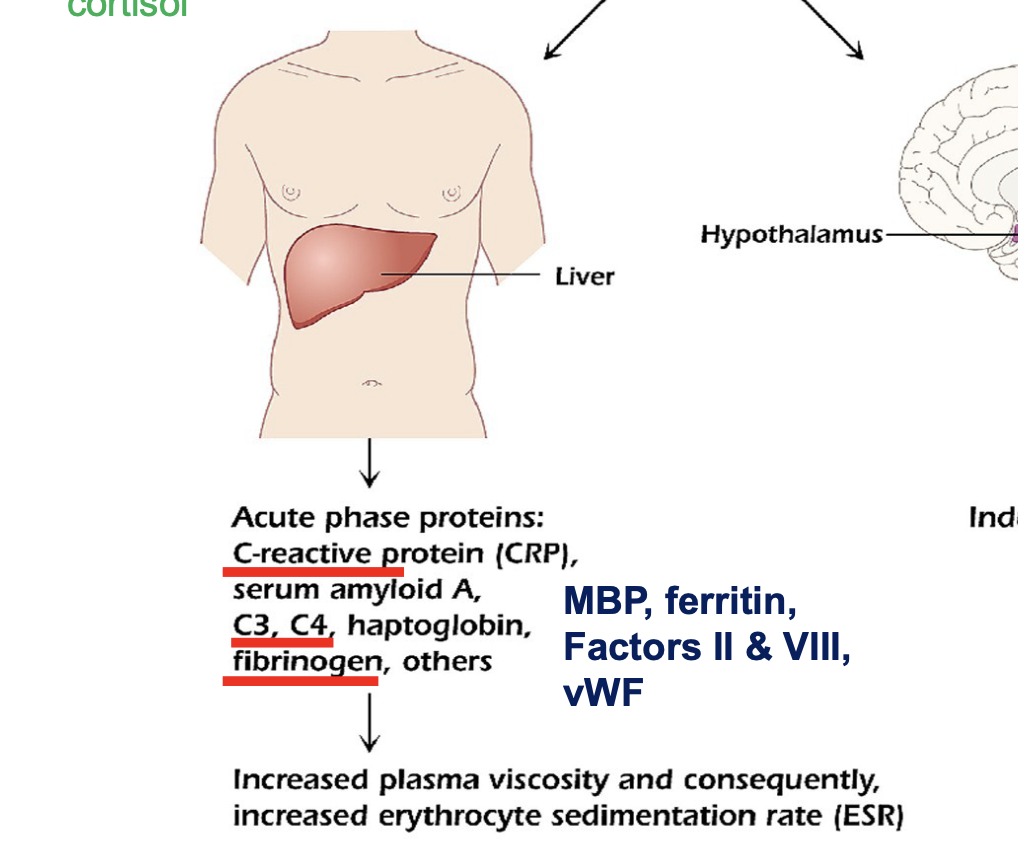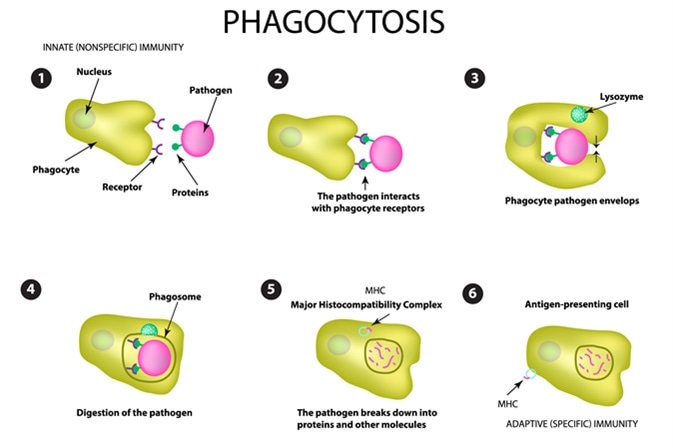Study Guide #2
Innate Immunity and Inflammation:
Diapedesis (extravasation): movement of leukocytes out of the circulatory system and towards the site of tissue damage or infection
Innate immunity: immunity that is present at birth and lasts a person’s entire life
Adaptive Immunity: specialized immune cells and antibodies that attack and destroy foreign invaders and are able to prevent disease in the future
Acute-phase proteins: plasma proteins synthesized in the liver whose concentration increase (or decrease) by 25 % or more during inflammation
Acute-phase response: systemic reaction against inflammation, infection, or tissue injury
Adaptive immune response: carried out by white blood cells called lymphocytes
Complement: a system of plasma proteins that interacts with pathogens to mark them for destruction by phagocytes
Innate immune response: the first line of defense against invading pathogens
Opsonin: an antibody or other substance which binds to foreign microorganism or cells making them more susceptible to phagocytosis
Pyrogen: bacterial cell wall fragments
Toll-like receptor: important family of receptors that constitute the first line of defense system against microbes
Fever: important adaptive function in activating the immune system; increase body temperature leads to faster neutrophil migration, activation and proliferation of lymphocytes, production of cytokines including interferon and increased movement of lymphocytes
Concepts:
Describe the cells associated with the innate response

Describe diapedesis of white blood cells

Understand the roles of cell adhesion molecules, selectins, integrins, and
chemokines in diapedesis
II. Mechanism of Diapedesis
A. Rolling Adhesion
Interaction between leukocytes and endothelial cells.
Mediated by selectins (e.g., P-selectin, E-selectin).
B. Activation
Chemokines released by damaged tissues activate leukocytes.
Changes in integrin affinity on leukocytes.
C. Firm Adhesion
Integrins (e.g., LFA-1, Mac-1) bind tightly to ICAMs on endothelial cells.
D. Transmigration
Leukocytes squeeze between endothelial cells (paracellular) or through the cells (transcellular).
Involves cytoskeletal rearrangement and membrane dynamics.
Describe the barriers that prevent microbial infection of the skin
-skin, mucous membranes, endothelia and tight junctions
Describe the respiratory tract barriers that prevent microbial infection
-first is the mucous covering the respiratory surface and the second is the various components present in the lining fluid (surfactants: reduces surface tension)
Define Pathogen-Associated Molecular Patterns (PAMPs):
-molecular motiffs associated with pathogens such as bacteria and viruses; Toll-like receptors have the important job of recognizing PAMPs
Define Toll-like receptors on leukocytes and describe their function
- recognize both invading pathogens and endogenous danger molecules released from dying cells and damaged tissues
List 11 different Toll-like receptor ligands (NOT NECESSARY TO MEMORIZE)
TLR1 THROUGH TLR13
Compare and contrast the roles of Toll-like receptors in innate and adaptive
immunologic responses

List five acute-phase proteins synthesized by the liver and their function

Innate immune mechanisms or responses
Inflammatory responses and innate immune mechanism:
-Inflammatory response: inflammation is caused in response to injury by bacteria, trauma, toxins, heat
-Innate immune mechanism: during inflammation, macrophages present antigens, undergo phagocytosis and modulate the immune response by producing cytokines and growth factors
Complement functions: facilitate the uptake and destruction of pathogens by phagocytic cells
Defense proteins: antibodies, lectins and antiviral proteins; they identify and bind to very specific foreign molecules
Processes:
Phagocytosis:

Complement cascade (general) “OIL”:

Diseases:
MBL deficiency: people with this condition have low levels of an immune system protein called mannose-bonding lectins; mannose-binding lectin facilitates opsonization by phagocytosis and initiates complement activation through the classic pathway
Leukocyte Adhesion deficiency: immunodeficiency disorder involving both B and T cells, characterized by the inability of leukocytes to migrate to site of infection to kill offending microbes

Video link for the picture above: https://www.google.com/url?sa=i&url=https%3A%2F%2Fwww.osmosis.org%2Fvideo%2FLeukocyte_adhesion_deficiency&psig=AOvVaw3uS5rSFt46J-3xfPM5YwNE&ust=1726582153438000&source=images&cd=vfe&opi=89978449&ved=0CBQQjhxqFwoTCIiNj4_Sx4gDFQAAAAAdAAAAABAE